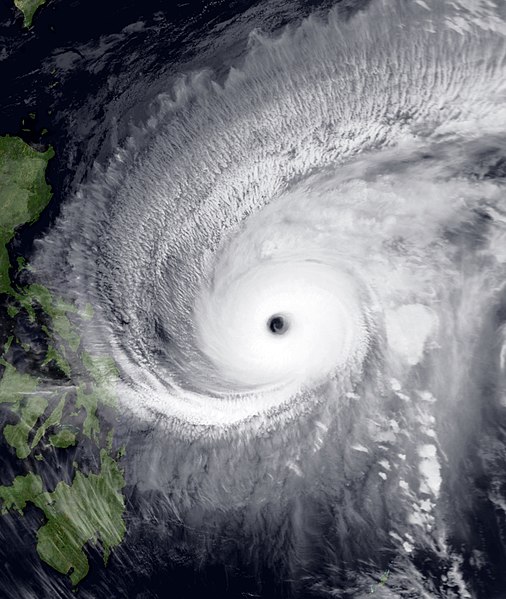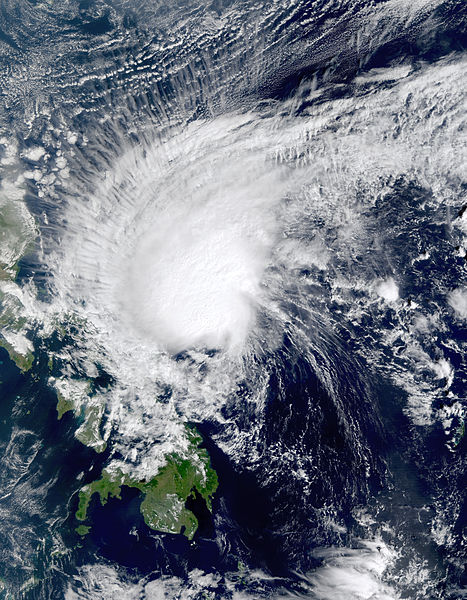Typhoon Mitag, known in the Philippines as Typhoon Basyang, was the first super typhoon on record in the month of March. The second storm of the 2002 Pacific typhoon season, Mitag developed from a trough near the equator on February 25 near the Federated States of Micronesia (FSM). It moved westward through the archipelago and intensified into a typhoon before passing near Yap on March 2. High winds and heavy rainfall affected the state, resulting in an islandwide power outage and destroying hundreds of houses. Mitag caused severe crop damage that resulted in food shortages. The rainfall and storm surge flooded much of the coastline as well as Yap's capital, Colonia. Damage totaled $150 million, mostly from crop damage. There was one death related to the storm's aftermath.
Mitag at peak intensity on March 5
GMS-5 visible imagery of Mitag at its peak intensity on March 5
2002 Pacific typhoon season
The 2002 Pacific typhoon season was a slightly above average Pacific typhoon season, producing twenty-six named storms, fifteen becoming typhoons, and eight super typhoons. It had an ACE over 400 units, making it one of the most active seasons worldwide. It was an event in the annual cycle of tropical cyclone formation, in which tropical cyclones form in the western Pacific Ocean. The season ran throughout 2002, though most tropical cyclones typically develop between May and October. The season's first named storm, Tapah, developed on January 11, while the season's last named storm, Pongsona, dissipated on December 11. The season's first typhoon, Mitag, reached typhoon status on March 1, and became the first super typhoon of the year four days later.
2002 Pacific typhoon season
2002 Pacific typhoon season
2002 Pacific typhoon season
2002 Pacific typhoon season





